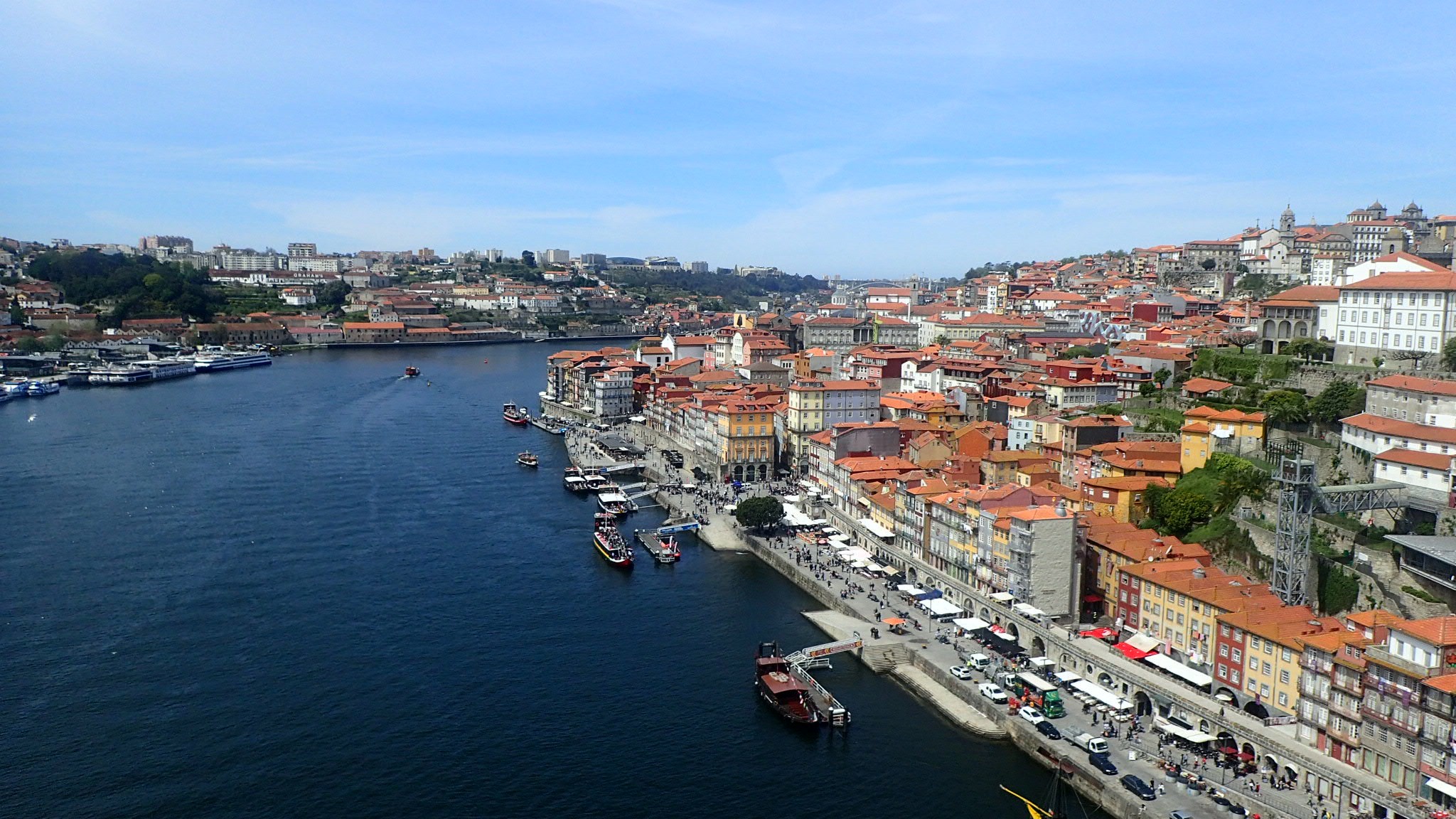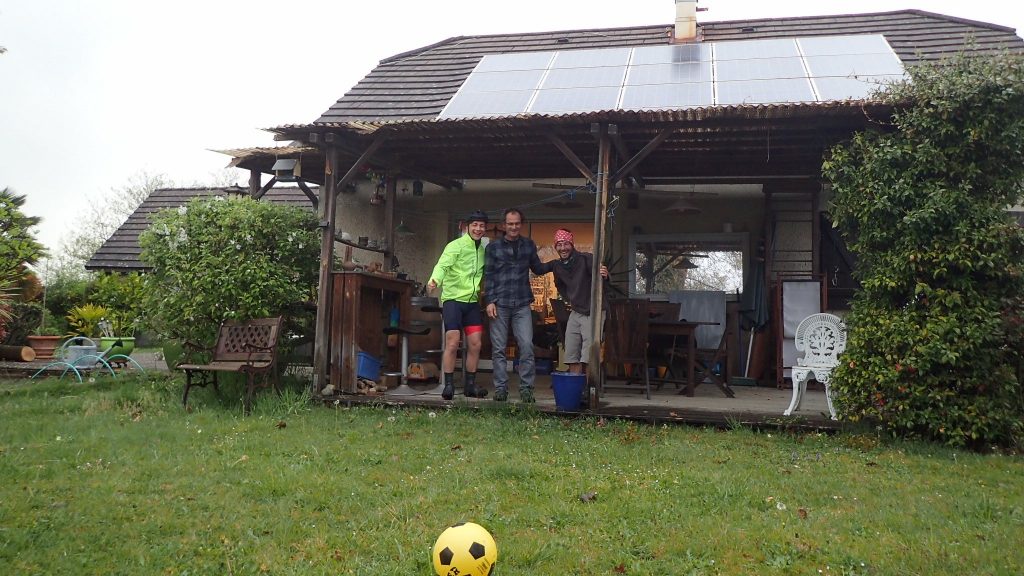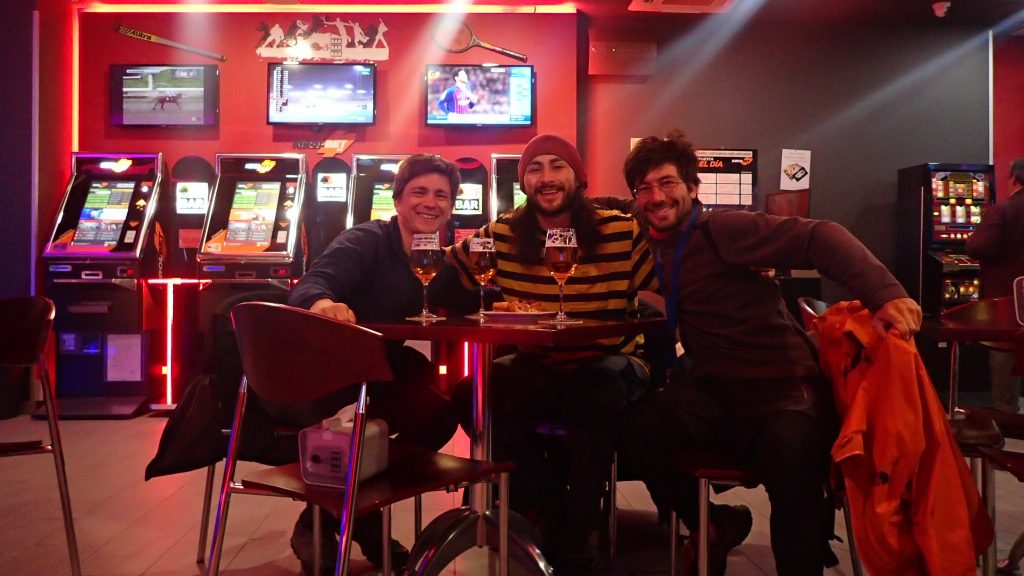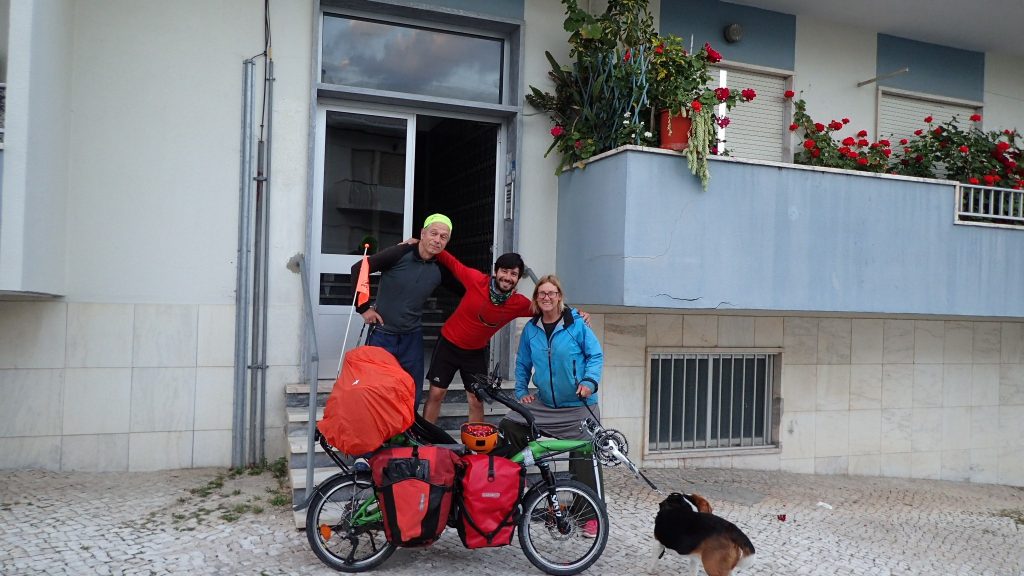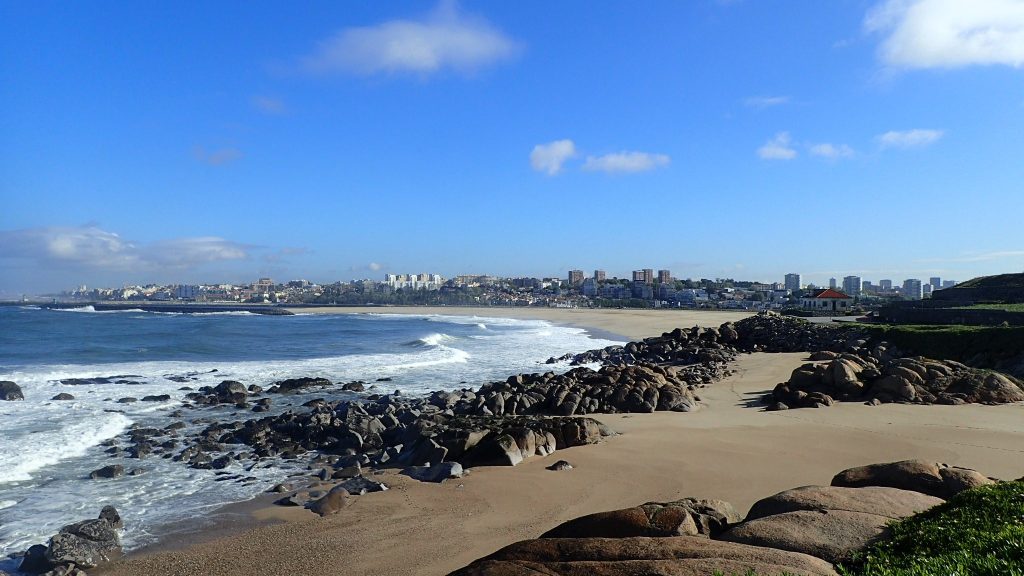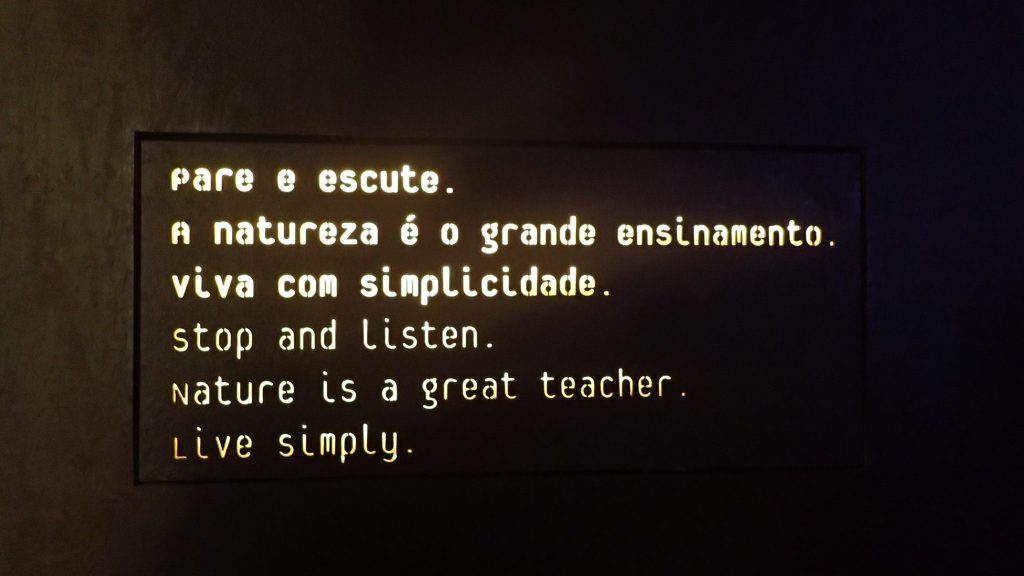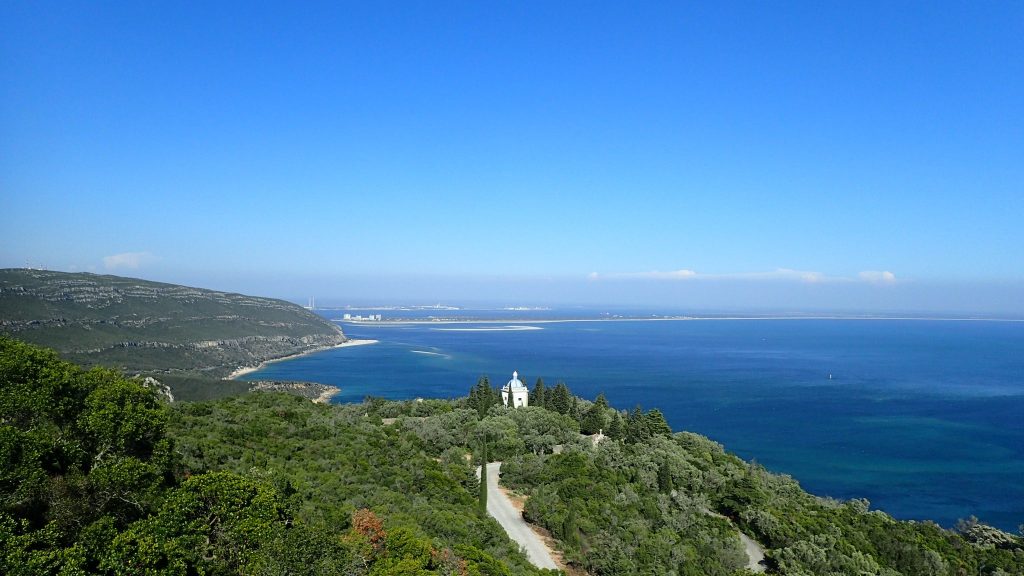Since my mother and aunt left Lisbon, the good weather is showing the tip of his nose! A long and uncertain part begins here. But not unpleasant. I will have time to write a few articles, to work my Portuguese and also to do the maintenance of my bike. If the wind allows, I will gladly fly over this Portuguese West Coast (the beaches of Caparica)! This is, however, not the subject of this article, which rather sums up the crossing of Spain and Northern Portugal. In the main lines, we followed a part of the Camino Frances (trail of Compostela) and then after crossing the Hispano-portuguese border from the North to Verìn, we went down by Montelegre towards Braga and then Porto. Finally, for the last part I followed the track of the EuroVelo 1 (far from finished but whose route is already planned and available).
Like a Monday
After four days flying, I’m back on the saddle on Monday, April 1. For two weeks, and accompanied by my friend Jens, we will pedal until on Sunday 14 arriving in Porto. This parenthesis at Arbas is both passed quickly but gently enough to rest.
Getting back in the saddle after a break is difficult but also fills up a lack. As odd as it may seem, after a few days of break, the urge to pedal, to move, is felt. This first restart will teach me, however, that I should not force too much… Unlike the 140km I had planned. Plus, the hills did not do the job any easier. So that when we arrived at our hosts Warmshowers, near Pau, I had to rest a bit before dinner.
Warmshowers is a solidarity network of cyclist traveler. The concept is similar to CouchSurfing but adds an affinity to the bike between the host and the guest. I used both networks during the trip, which in addition to a shower, allows to make nice encounters!
These two weeks were the occasion to make several “premieres”: use of the networks of accommodation (Warmshowers and CouchSurfing), pedaling in all conditions (wind, rain, hail), sleeping in the snow, passing passes… Pedaling at two was, I think, quite beneficial at the beginning of the journey. Being two, we have more time, so it is easier to plan the stages. It’s also handy for shopping and distributing weight. Finally, sharing these moments with someone is the most important. It allowed me to take a little bit of my rhythm and also to gain confidence.
A snowy border, two new countries
From Tuesday we arrive in the green and wet Basque country. Barely the hillsides behind us, that passes are presented to us. The Col d’Osquich notably, will have marked my mind… During his ascent, I motivated myself thinking of the Basque cheese very present on the roadside! We decided the day before which level we would cross the Pyrenees. The main dimensioning parameter being the elevation (and of course the pavement/traffic of the road). Our guests have advised us, and we will pass by a valley nearby Saint-Jean Pied de port, departure of the Camino Frances, one of the many trails leading to Compostela.
The crossing will wait, because we prefer to pedal under the sun, especially when it is necessary to climb 1200 m! Our days will be similar and will follow a pattern:
- 7h: alarm clock, breakfast, preparation of saddlebags and bicycles
- 8.30 am: “theorical” departure
- 9H: real departure
- 12.30 pm: snack break and contact of a host for the next day (or even the evening)
- 2pm (or after 2/3 of the daily commute): big lunch break
- 5pm: banana/chocolate break
- 7pm: arrival at the host or search for a place to bivouac
To keep this pace, we decide to pedal 2 days out of 3 or 3 days out of 4 If we are in shape. The only time we have exceeded this pattern (4 days of pedaling), I really finish on the kneecap! It will be the limit. For accommodation we have used the two networks mentioned above and the Albergue (pilgrims ‘ hostels). The tent will have greeted us only three times. But back to our climbs…

On the morning of d-day (one Thursday), a surprise awaits us: all the surrounding peaks are covered with snow (while the altitude did not exceed 1000m). Despite the beautiful scenery offered by this snow, doubts begin to invade us regarding the pass that we must cycle… a priori it should be at least be cleared for cars… On the way we stop in a winery to buy a bottle of the very good local wine tasted the day before, the Gabe (“without” in Basque, because without sulphite). This will be a good gift to share with our future guests.
After Urepel begins the ascent to the pass, at least the steep part. It will last 500m and it is the longest since the beginning of the trip. Fortunately the birds encourage us with their cheerful singing. It will take us 30 minutes less than expected to come to the end of the pass. Then place to the descent, and a good break in a bar to warm up. We will have seen only one car during the ascent, this road was really wild and little practiced. The 40 km remaining are mainly going down except for a small pass, we cross many cyclists who greet us.
Straight across España!
Very characteristic of Spain, and interesting info for the cyclist in a hurry (an oxymore, I know): free highways compete with national roads, which are therefore empty! The proof is that on these deserted roads we will cross several abandoned gas stations, remaining us of the zombie series…
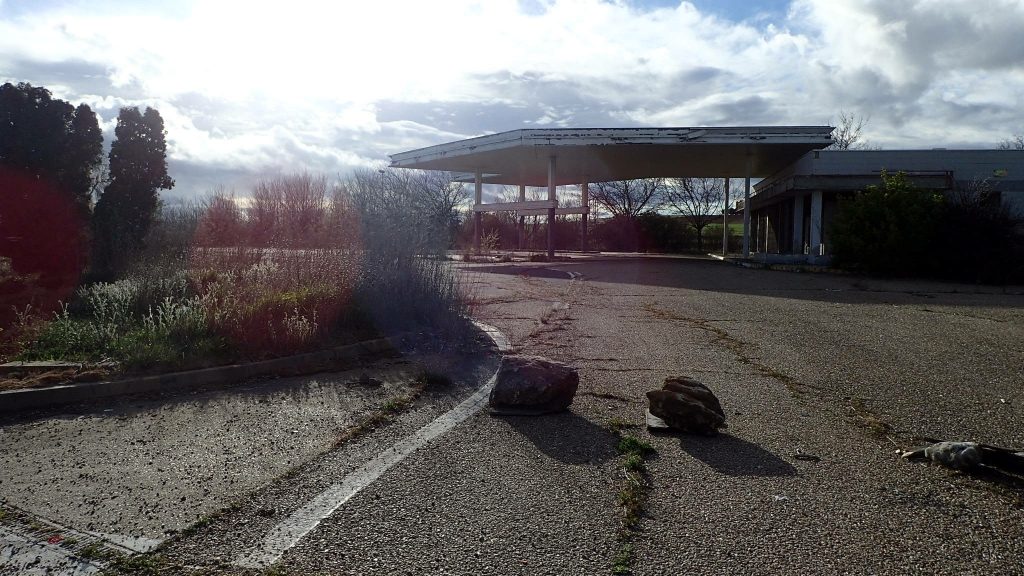
We will cross the autonomous communities (equivalent to our regions) of Navarre, Rioja, Castille and Leon and Galicia. At first, the wind and the rain accompanied us. Every time we saw windmills the wind was undoubtedly blowing and head-wise! The stages were difficult until Benavente, but we still find small cafés where we take refuge and dry a little. But this will not remove the charm of the regions visited! The Camino Frances has a deserved success. The landscapes changing from the snowy forest, to the African plains with a red earth, passing through hilly green fields. We no longer count the crossed castles on the way. Among the two most difficult moments, one night in the snow and the arrival in the rain in Logroño. In Padornelo, about 1300m above sea level, we mounted the tent on the snow. We believe that the night temperature was between -3° and -5° C and the equipment of Jens supports 10-15 °c minimum… To avoid having to de-ice Jens in the morning, we exchange our sleeping bags (the insulation of my mattress will help to keep a little heat). Despite this, we will still had to use the survival blanket (from 1am) over the bags (in addition to sleeping dressed). It was not the best night we have ever spent! The arrival on Logroño, it, was mostly psychologically harsh. We only had 30 km left to do and the wind seemed in our favor, but only in the beginning. Then the sky began to blacken. In a single blow, we found ourselves in a violent downpour with strong headwind, all on 15 km of busy national road… We were drenched from head to toe, frozen hands, and moral at the lowest. In these moments, we wonder what we are doing here! But it only lasts two hours knowing that we will end up in a warm bed…
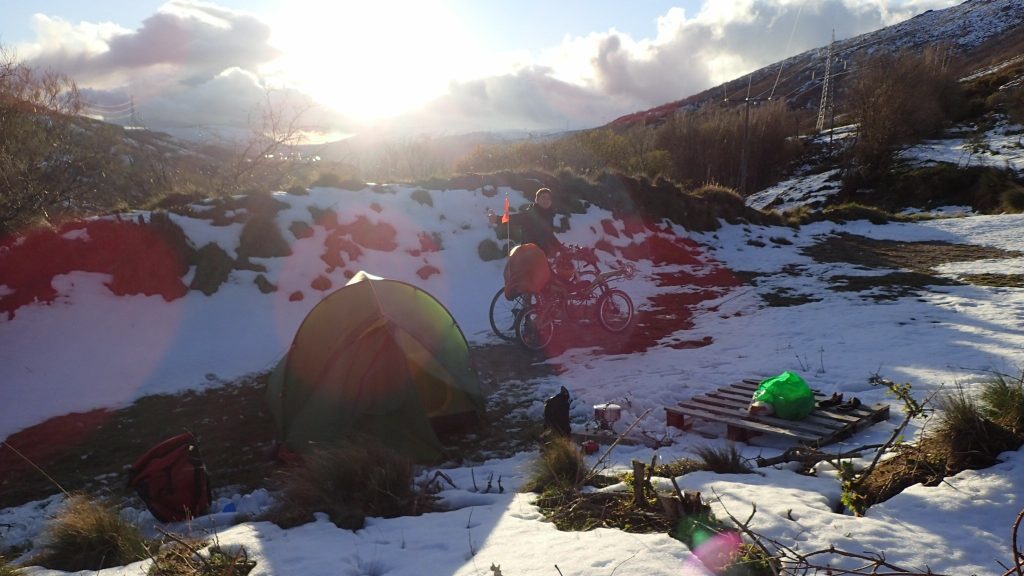
From Benavente indeed, everything got easier! First, the stages were mostly descending, and the wind much calmer. Verín is our last Spanish stop, we will cross the border with Portugal further South West from here. After two days of cycling we will nevertheless take a break in Verín. The great blue sky was inviting for a short hike and a paragliding ground handling lesson for Jens and Victor, our host. The place is far from ideal to practice ground exercises but will be sufficient for the sensations of takeoff and some basics.
We will leave Spain and the wild hills of Galicia, with dry landscapes, to reach the green valleys on the other side.
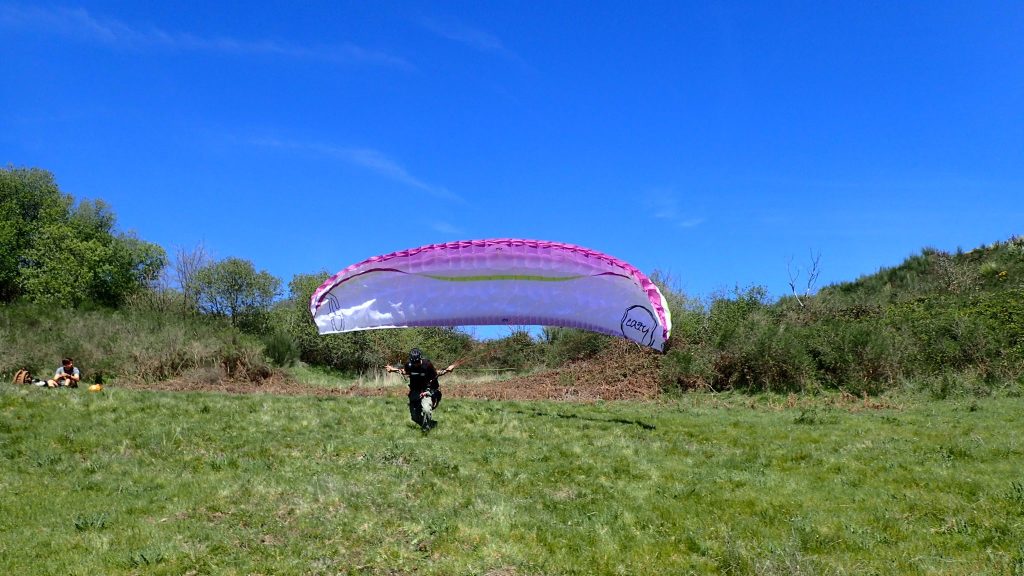
The cobblestones and valleys of Portugal
From Montelegre, we will join Rendufinho and then Porto in two days. The difference between each side of the border is blatant: from the yellow we went to the green. It is a region where it rains apparently a lot according to Marco, a local. Many people we met speak French, which helps us well because our Portuguese is worse than our Spanish! Unlike Spain, motorways aren’t free, so national roads are busier. In addition, most cities (and villages) still have paved roads, which are not very pleasant for Jens (on a racing bike). Calendar coincidence: the Paris Roubaix (bicycle race on paving stones) takes place this Sunday and a Flemish will win the stage (257km in 6h, around 43kmh average speed, we are far away!).
Braga seems to be a pretty town but we just stopped by for a coffee and a pastel de Nata, the national pastry. The urge to arrive in Porto is too strong. Once in Porto, Jens left me on Tuesday night. We went a long way together, and faced rain, wind, paved, road and dangerous national! We will not forget it! Thanks to him, I also started to take a rhythm. I hope the experience has been as beneficial to him, but I do not doubt it.
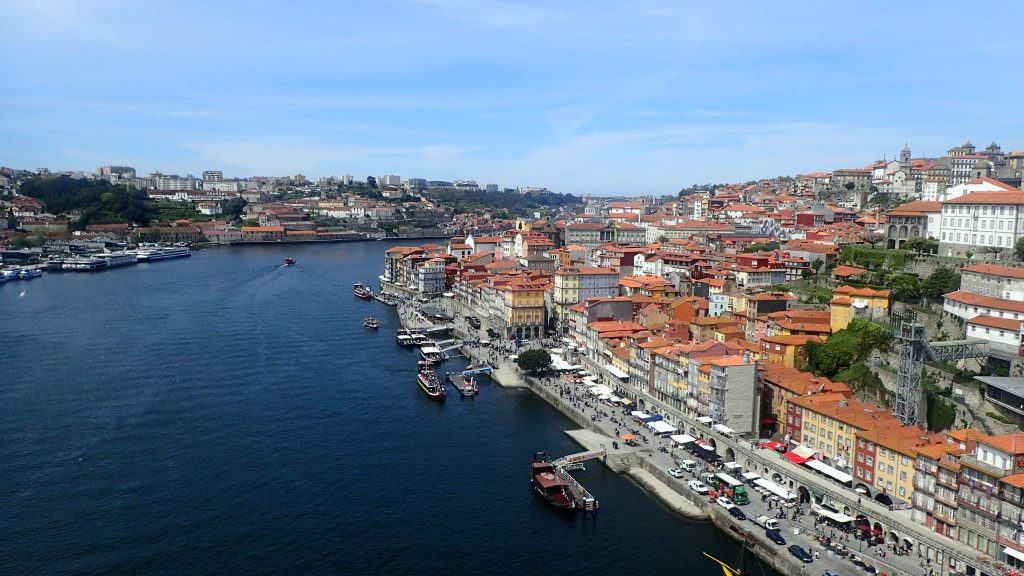
Until the wind turns and the sun returns, I plan to leave for Lisbon on Thursday. my journey will follow the EuroVelo 1 whose route has been defined but which is not yet completed. However, the coast is very beautiful and the EV1 crosses a lot of forests. Much of these forests burned during the summer of 2017 (about 100 deaths that year), and the situation may not improve with climate change… It is a pity because the bivouac in the middle of the pines was very pleasant…
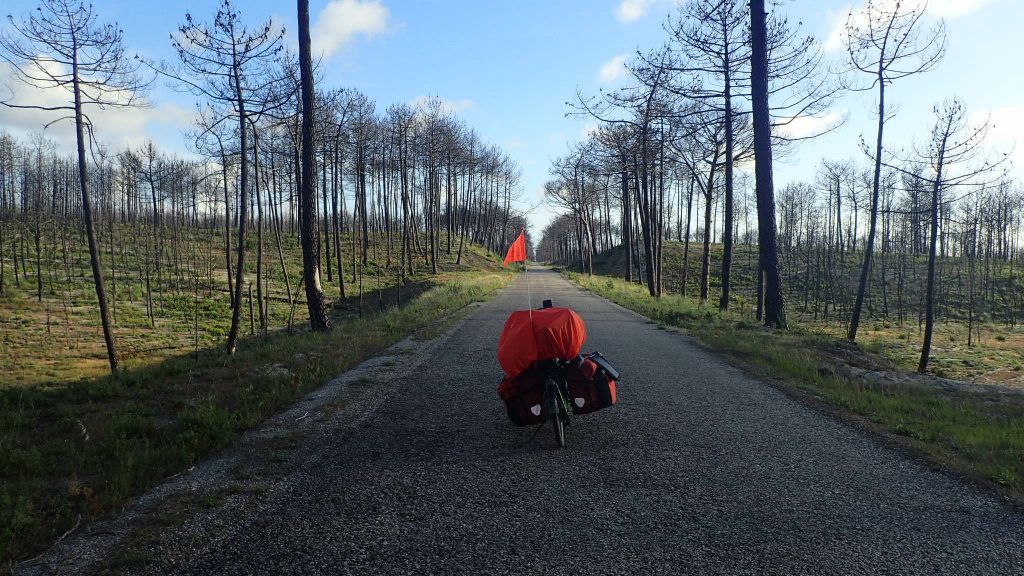
Having a roof for the night is a good pretext for a longer stage. At least for me! I will do about 130 km to reach the guests of Caldas da Rhaina, a couple of traveler with an impressive curriculum. Gone on a bike, they traveled for 13 years! And they just settled in Portugal to rest a little. An evening has been too short to exchange with Amaya and Éric, so I decided to stay one more day at their place, Lisbon will wait! It is also the opportunity to visit Obidos, a pretty medieval town not far from Caldas.
Another farewell on leaving, great meeting with these good cyclists. Very efficient day departure at 7:10 and arrival at 13h10 in Lisbon! A bit of back wind certainly! I put the bike in the hotel and then explore the marinas of the Rio Tejo. This is where I’ll be looking for a boat to the Canary Islands.
